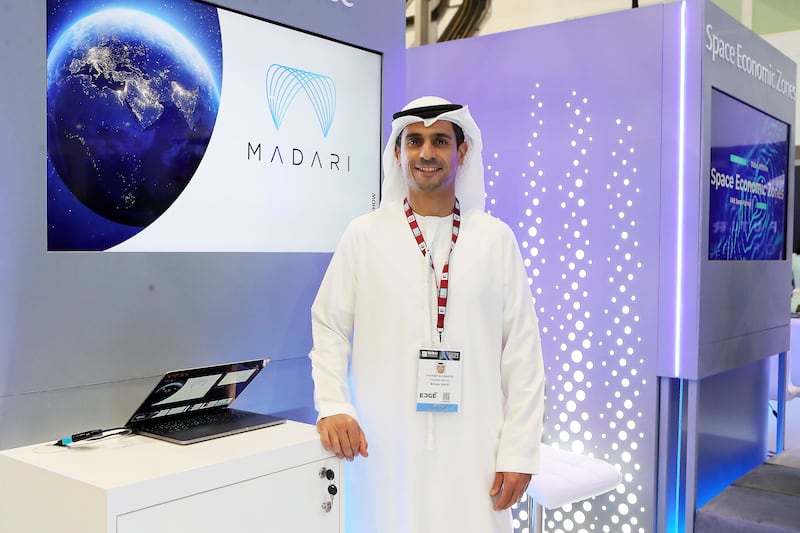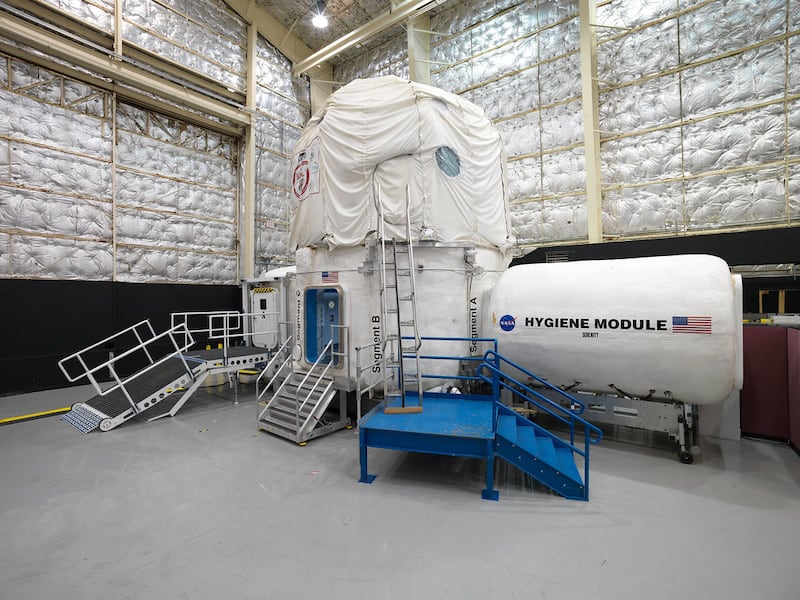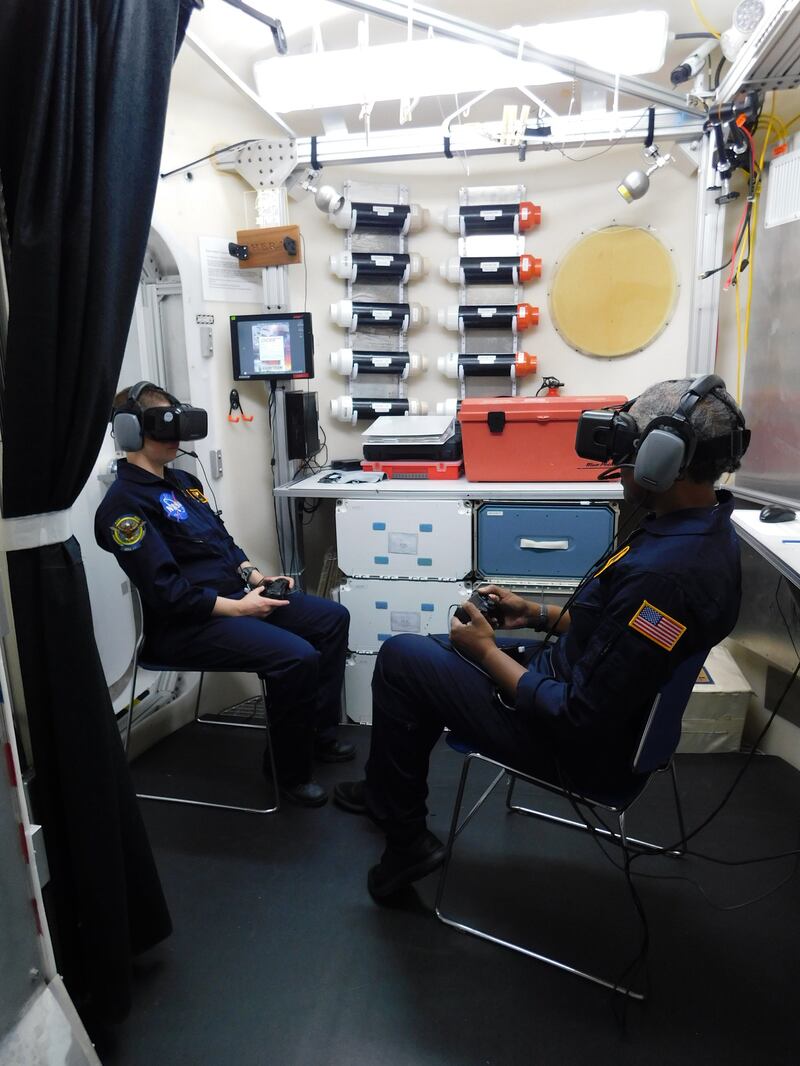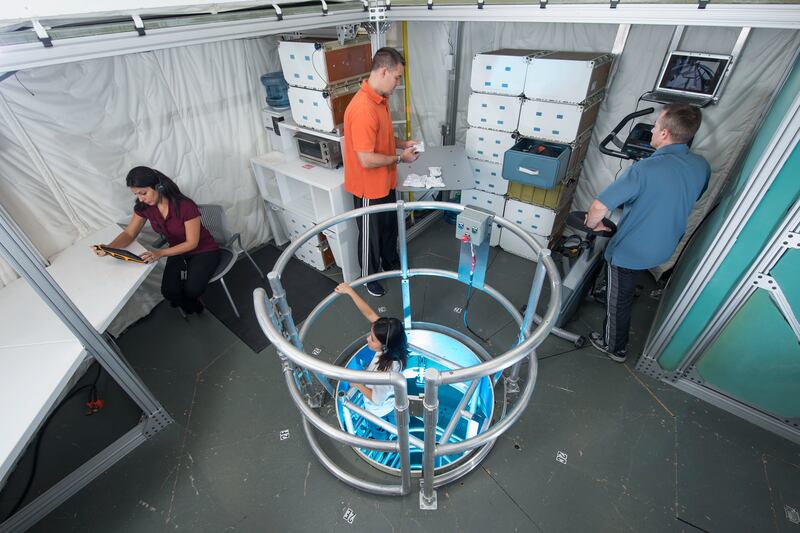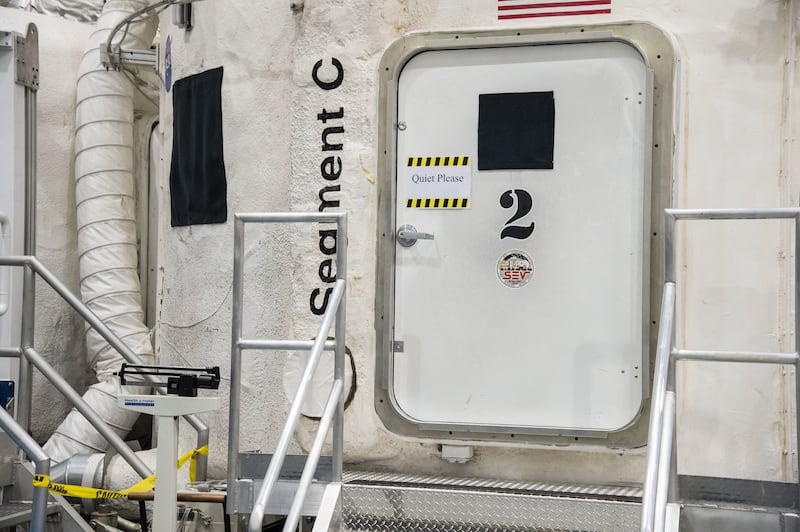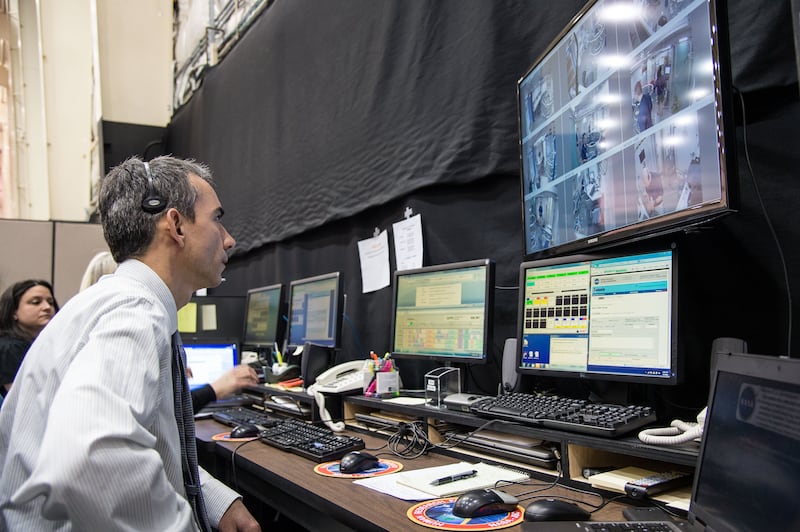Emirati pilot Shareef Al Romaithi is set to begin a 45-day Mars simulation mission inside a Nasa habitat on Friday, where he and his three crew mates will live and work in near-isolation.
Mr Romaithi, 39, a captain with Etihad Airways, will spend his time carrying out virtual walks on the surface of Mars and using artificial intelligence to solve various maintenance problems that may arise on their “spaceship” during their journey to the Red Planet.
He and his three American colleagues are part of the second phase of Nasa's Human Exploration Research Analogue (Hera) mission, which takes place in a three-storey habitat in Houston, Texas.
The programme is meant to uncover insights into the psychological and physiological effects of prolonged confinement and isolation, similar to those experienced during extended space travel.
Mr Romaithi, a father of three girls, said during an online media briefing on Thursday that he was looking forward to “walking on Mars”.
“I have two favourite studies – the first one is virtual walks on the surface of Mars,” he said.
“I'm designated as one of the crew members who will be conducting walks, as compared to the other two, who will be carrying out drone operations.
“I like it because it allows me to interact with my crew members just like astronauts in space would do.”
The crew members will be using virtual reality headsets to perform most of their tasks and will be experiencing delays while communicating with mission control, similar to what astronauts are expected to experience during actual deep-space journeys.
Confined space with no privacy
While each member will have their own tiny living space, there will be no doors in the Hera habitat, which measures 60.39 square metres and is split between two floors and a loft.
There are workspaces, a laboratory, a kitchen and an airlock on the lower level, while the upper level has four private crew sleeping quarters, a bathroom and a flight deck.
The small living area would not be a problem for Mr Romaithi, who said he is used to working from a confined space because of his experience as a pilot.
“The flight deck is a relatively small workspace and I might not be in there for 45 days, but I'm usually there for quite a long time, especially during long flights. We can be sitting in there for more than 10 hours,” he said.
“So, it has prepared me mentally by working in a confined space.
“We're also working with a highly diverse team in any regular flight. My crew members can be between eight to 10 different nationalities, which has prepared me for this mission.”
Mr Al Romaithi has a stellar career in the airline industry, with more than 16 years of experience as a pilot.
The Abu Dhabi native has more than 9,000 flight hours, including on several Airbus and Boeing aircraft.
He earned a doctorate in aviation from Embry-Riddle Aeronautical University at the age of 31, which made him the youngest and eighth graduate to attain a doctorate in aviation at the time.
'I will miss my daughters'
With limited storage space available, Mr Romaithi will only be carrying essentials with him into the habitat, including a picture of daughters, a UAE flag and a board game.
“As a father of three little girls, of course, I will miss watching them grow,” he said.
“The eldest is 16 months and the other two are twins – they are almost two months and a half, so they're going through a lot of changes and I will be missing all of this.”
Contact with family and friends during the mission is limited, with crew members only having the opportunity to send and receive messages at certain intervals.
Strict daily routine
The crew members are going to stay busy with a strict routine that they have to follow, with their days starting at 7am and ending at 11pm.
They will remain occupied carrying out medical tests, virtual walks on the Martian surface, exercising and spending time together as a team.
Six universities in the UAE are also participating in this mission and have sent experiments for Mr Romaithi to carry out.
“There will also be unscheduled emergency events that we would have to deal with to ensure the success of the mission,” said Mr Romaithi.
During free time, the crew members may exercise, read books, socialise with their colleagues or play board games.
More simulation missions under way
Mr Al Romaithi is part of the second group of volunteers to participate in an analogue study in Hera this year.
They will exit the habitat, or “start their return to Earth”, on June 24.
The first phase was completed in March. The third and fourth phases will take place in August and November.
Adnan Al Rais, one of the assistant director-generals at the Mohammed bin Rashid Space Centre, expressed hope that more Emiratis can join in the coming phases of the Hera mission.
Such missions are important for the space centre to help prepare for the Mars 2117 programme, which involves building a human settlement on the Red Planet, he said.
“The human element is very important to develop and capabilities in science and technologies that will enable humans to sustain long journeys to Mars and also be able to live on the surface and fly back,” he said.
This is the second space simulation mission that the UAE has taken part in, after Saleh Al Ameri completed an eight-month mission in Russia in 2022.
